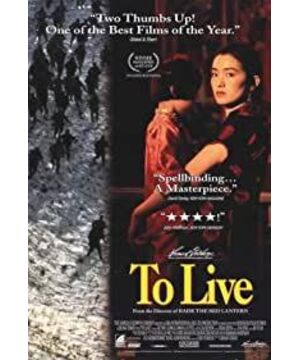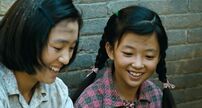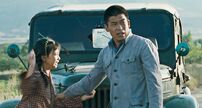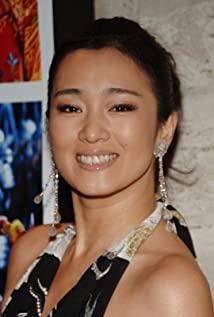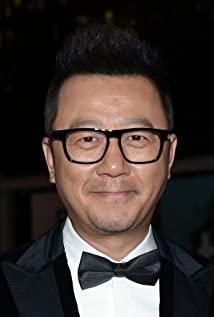The generation of Chinese film directors is not a strict academic concept, but a conventional statement. Generally speaking, it is divided like this: 1. "First-generation directors" - pioneers of Chinese films. Chinese film began in 1905, funded by Ren Jingfeng, the owner of Fengtai Photo Studio, and the Peking Opera "Dingjun Mountain" photographed by Liu Zhonglun. This film is a faithful record of the content of the performance on the stage of the theater, and the position of the camera is also in the auditorium, so this first film produced by the Chinese himself is a drama documentary. Early Chinese films had a close relationship with opera, and were also influenced by the dramas called civilized operas at that time. Therefore, the films of this period were also called "shadow operas". In 1913, Zheng Zhengqiu and Zhang Shichuan collaborated on the filming of "Difficult Couples, Difficult Wife", and began to create an independent film script, and began to try to get rid of the traditional opera stage. ". They also became China's first generation of filmmakers, China's "first generation of directors". 2. "Second-generation directors" - the first golden age of Chinese films The main activities of China's "second-generation directors" were in the 1930s and 1940s, and some directors continued until the 1950s, 1960s and even In the 1980s, still working in film positions. This generation of directors mainly includes Cheng Bugao, Shen Xiling, Cai Chusheng, Shi Dongshan and Fei Mu. The outstanding contribution of the "second generation directors" is to complete the transformation of Chinese films from silent films to sound films. In art, their biggest feature is realism. At the same time, they pay attention to the combination of "realism" and film, gradually get rid of the limitations of the stage, and give full play to the strengths of film art. The second generation of directors started film creation under the influence of the left-wing film movement. They followed the production line of anti-imperialist and anti-feudalism, followed the pace of the times and kept close to social life. They produced a large number of films showing the lives of workers, farmers, women and intellectuals and struggle videos. Their representative works include Wu Yonggang's "Goddess", Cheng Bugao's "Spring Silkworm", Fei Mu's "City Night", Sun Yu's "The Great Road", Zhu Shilin's "Mother Song", Shi Dongshan's "Woman", Cai Chusheng's "Fishing" Song of Light" and "Tao Li Jie" by Shen Xiling and Yuan Muzhi, etc. 3. "Third-generation directors" - the classic Chinese film directors who have entered the film industry after the founding of the People's Republic of China, known as the "third generation" of Chinese film directors . This generation of directors mainly includes Cheng Yin, Xie Tieli, Shui Hua, Cui Wei, Ling Zifeng, Xie Jin, Wang Yan, Guo Wei, Li Jun, Yu Yanfu, Lu Ren, Wang Ping, Lin Nong, etc. They follow the principle of realism to express life The essence, in-depth display of contradictions and conflicts, as well as in the national style, local characteristics, artistic meaning and other aspects, have carried out a very useful exploration.
4. "Fourth Generation Directors" - Survivors of Chinese Films The fourth generation filmmakers are mostly creative groups composed of graduates from Beijing Film Academy and Shanghai Film School before the Cultural Revolution. Their creative life has been almost since 1978. The Year of Doubt has just begun. In the gap between the third and fifth generations, they explored and struggled with steady creative strength, quickly found their position, and had a lasting artistic stamina. The creative climax of the entire fourth generation was accompanied by discussions on the separation of film and drama and reflection on history, and rural areas gradually became the central theme of their works. Representatives of the fourth generation of directors include Xie Fei, Zheng Dongtian, Zhang Nuanxin, Huang Shuqin, Teng Wenji, Huang Jianzhong, Wu Tianming, etc. Together with the third and fifth generation directors, they created the second golden age of Chinese cinema. 5. The "fifth generation of directors" - the second spring of Chinese films The fifth generation - refers to the directing students who graduated from the Beijing Film Academy in 1982 (later extended to the Department of Photography and Fine Arts), including Zhang Junzhao and Chen Kaige , Tian Zhuangzhuang, Zhang Yimou, Zhang Jianya, Huang Jianxin, etc. Among them, Zhang Junzhao's "One and Eight" in 1983 took the lead in raising the banner in the Guangxi factory and shot into the sky. The "fifth generation" young filmmakers fought tenaciously at the bottom of the turmoil because of the catastrophe of the Cultural Revolution. After returning to school, they systematically studied film expertise, accepted the popular Western philosophy and aesthetic trends at the time, and formed new values and aesthetics - these anti-norm His spiritual character was in line with the strong subjective consciousness and reflective trend of thought in the entire literary and artistic field at that time. With profound life accumulation, their films are fresh and unique like tender grass after a cold winter. As Chen Kaige said: "Everything is inseparable from the creator's experience and feelings. Ten years of worry and anger, four years of study, and then poured out, can't make the 'Liu Gong Fen Dai colorless' ? "I feel the first and then the work is in the form, and there is no difference between modern and ancient masterpieces" (Chen Kaige, "Qin Guoren", "Contemporary Films", No. 4, 1985) 6. "Sixth Generation Directors" - the sudden emergence of Chinese films The sixth generation of directors is also It began to surface for a long time, and it is gratifying to see that there are many films that you know and pay attention to, and there are also several directors who are remembered by the world, such as Wang Xiaoshuai's "Seventeen-Year-Old Bicycle", Jia Zhangke's Hometown Trilogy (" Xiao Wu", "Platform", "Ren Xiaoyao"), Zhang Yuan's "Going Home for the New Year", these three directors are the most representative at present. As the leaders of the sixth generation, they have not disappointed the Chinese people. It is a rewarding experience every time. Another common feature of the sixth generation of directors in China is that they all have their own words, but they do not regard their works as great "big works" (this is Chen Kaige's big problem). Modern life is becoming more and more diverse, and its meaning cannot be summarized by any "big history" or "big narrative" model. The stories narrated by the sixth-generation directors are their own stories. Only if these stories can be presented in large numbers can the diverse vitality of a society and culture be revealed. [First-generation directors] (film directors during the silent film period, roughly active in the early 20th century to the end of the 1920s, with about 100 people) Representatives: {Zheng Zhengqiu, Zhang Shichuan} The first Chinese film from 1905 to the early 1930s The short story "Difficult Husband and Wife" The earliest existing Chinese film "Labor's Love" The first relatively successful feature film "The Orphan Saves Ancestors" The first martial arts monster craze "Burning the Red Lotus Temple" The first sound film "Burning the Red Lotus Temple" "Singer Girl Red Peony" Xia Yan started left-wing film creation, representative work: "Crazy Flow" in the 1930s "Poet director" Sun Yu has filmed works such as "The Road" and "Wild Rose", reaching maturity in the lyrical and romantic artistic style. As soon as "Angel of the Road" came out, it was hailed as a wonderful flower in the history of film, and it also drew a complete stop for Chinese films to reach the first peak.) [Second-generation director] (inheriting the traditional development of Chinese film narrative) Representative Characters: {Cai Chusheng, Fei Mu} Around 1934-1949, Cai Chusheng and Zheng Junli co-produced "A River and Spring Water Flows East" (the film successfully used the traditional form of Chinese film - the story of the joys and sorrows of family relationships to see the society, this film represents the The outstanding level of Chinese realism films, its appearance is the best work in 1947, and it is also a sign of the maturity of Chinese film art) Ups and downs "Lights of Ten Thousand Houses" Fei Mu "Spring in a Small Town" Shi Hui "My Life" [Part 1 Three generations of directors] Representative characters: {Xie Tieli, Zheng Junli} Around 1949-1976, Xie Tieli's works "Early Spring in February", "Bao's Father and Son", and "Dream of Red Mansions" are all in one. Shui Hua is the pursuit of exquisite art among the third-generation directors. There are only 7 of his works, but they are basically high-quality works: "The White-Haired Girl", "Linjiapuzi", "The Land", "Revolutionary Family", "Eternal Life in Fire", "Death of Sadness" "The Blue Flower." Zheng Junli's representative works: "Lin Zexu" (characterized by creating characters in conflicts and conflicts, and showing strong national characteristics in narrative modeling), "The Crow and the Sparrow". Li Jun's representative works as "Serf" and "Returning Heart Like an Arrow" and so on. Xie Jin represented as "Women's Basketball No. 5" (China's first color sports feature film), "Red Detachment of Women" and so on. Xie Jin's "Reflection Trilogy", "The Legend of Tianyun Mountain", "Furong Town" and "Wrangler". [Fourth Generation Director] Representatives: {Wu Yigong, Zhang Nuanxin} Around 1978-1982, Wu Yigong already embodied the style characteristics of prose culture and poetic shaping in "Bashan Night Rain" directed by him in the late 1970s. In addition, he also has a representative work "Chengnan Old Events". Zheng Dongtian's masterpieces "Neighbor", "Mandarin Duck Tower" and "Once Upon a Time in Taiwan" Zhang Nuanxin is the representative of female directors in the fourth generation of directors. Changes, such as the use of non-professional actors as the protagonists, the use of a large number of live-action shooting, the use of long shots, the exploration of new languages in the film, and the emphasis on the depiction of the characters' inner emotions, etc.) Yan Xueshu's representative as "Wild Mountain" [Fifth Generation Director] Representative: { Zhang Yimou, Chen Kaige} Zhang Yimou's representative works: "Red Sorghum" and "Big Red Light" "The Cage Hangs High", "The Case of Qiu Ju", "Hero", "House of Flying Daggers", etc.; Chen Kaige's representative works: "The Yellow Earth", "The Great Parade", "King of Children", "Farewell My Concubine", "Farewell to the Moon", etc.; Huang Jianxin's representative works: " Back to Back, Face to Face, Praise Me, Please, Tell Your Secret, Ambush, etc; (1985), "The Horse Thief" (1986); Wu Ziniu's representative works: "Blood in the Black Valley" (1984), "The Evening Bell" (1988); Feng Xiaogang is an accomplished artist in the performance of urban images during the transition of the world. He is good at commercial film production and is known as the father of Chinese New Year films. Representative works "A World Without Thieves", "Party A and Party B", "Mobile Phone", "Sigh", "If You Are the One", etc. [Sixth Generation Director] Representatives: {Jia Zhangke, Lu Chuan} ", etc.; Lu Chuan: "Kekexili", "Looking for a Gun", etc.;
View more about To Live reviews


